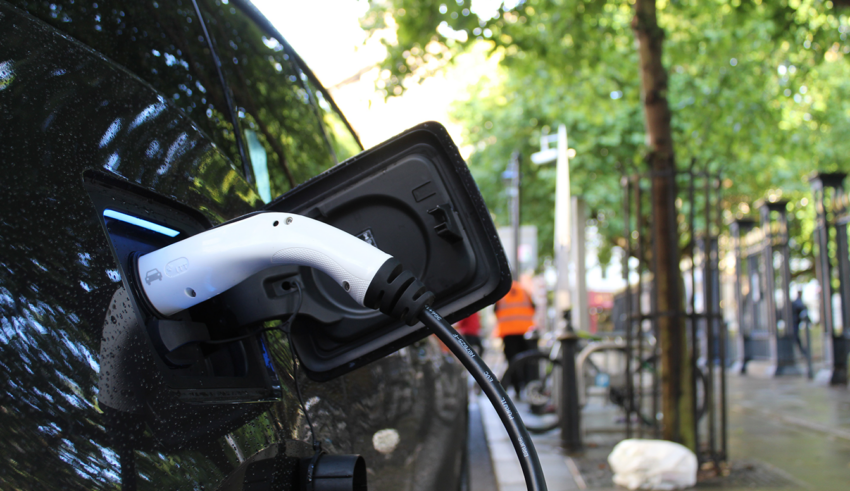AG INSIGHT | 18/10/2017
Clean Growth Strategy: How will it impact investment in the low carbon economy?

The Clean Growth Strategy marks an important step forward for the UK’s low carbon economy, but the extent to which it will increase private investment varies across sectors, argues Nick Molho, Executive Director at the Aldersgate Group.
The UK government recently published its long-awaited Clean Growth Strategy. It sets out 50 headline policies and proposals to cut emissions and grow low carbon investments across the economy.
A critical change in tone
Before looking into the implications of this strategy for different parts of the economy, it’s worth reflecting on one important point. This strategy differs markedly from some of its predecessors in that it enjoys clear cross-government backing. Gone are the days – it seems – of contradictory ministerial statements coming from the same department. Not only does the strategy contain a foreword from the Prime Minister, in which she commits her government to “help British businesses and entrepreneurs to seize the opportunities which the global low carbon economy presents”, but it also sets out a comprehensive set of actions that will have required support from several government departments beyond the Department of Business, Energy and Industrial Strategy (BEIS).
This may seem simplistic but a positive, consistent mood music coming from government really does have an impact on investment confidence and helps improve the UK’s standing in the eyes of international companies that have a wide choice of markets to invest in. The cross-departmental aspect of the strategy is crucial in that it can help cut through some of the recent political uncertainty and provide a clear sense of policy direction for the years ahead.
When it comes to the detail, the impact of the Clean Growth Strategy will differ from sector to sector and in many cases depend on the measures that will be taken in the months to come.
A boost for offshore wind but no clear role for mature renewables
In the power sector, the reconfirmation that £557m will be made available for further CfD auctions of offshore wind projects is very positive. It will help the industry develop a pipeline of investable projects (which could result in 10GW of new capacity when including projects from the last auction), build on the significant cost reductions delivered in the auction round of September 2017 and invest in the UK’s growing supply chain. However, one notable absence in the strategy is the future of mature renewables like onshore wind and solar power. Given how cost-competitive these technologies have become, the government should work with industry to develop a subsidy-free mechanism that will encourage the development of projects in parts of the country where communities want them.
Buildings: Good ambition but will the industry get the regulations and incentives it needs?
On buildings, which accounted for 19 per cent of the UK’s emissions in 2016, the strategy is a step forward in that the government’s objectives are now much clearer. In addition to wanting all fuel poor homes to be upgraded to an energy efficiency standard of EPC Band C by 2030 (funded through the Energy Company Obligation), the government sets out aspirational goals to bring as many non-fuel poor homes and privately rented homes to a standard of EPC Band C by 2035 and 2030 respectively. It also announced consultations on measures to improve energy efficiency in new and existing homes and commercial buildings.
Whether the clearer vision set out by government will be met depends on the measures that come out of upcoming consultations. The experience of previous energy efficiency support schemes suggests that for a step change in energy efficiency investments to occur, clear regulations (mandating improvements in energy efficiency standards by a particular date) and well-timed fiscal incentives (such as stamp duty rebates) will need to be introduced.
The strategy also delivers progress on heating, one of the trickiest infrastructure areas to decarbonise. The commitment to support low-carbon heating through a reformed Renewable Heat Incentive scheme (with £4.5bn of committed investment up to 2021), an extension of heat networks underpinned by public funding and £184m for innovation, will help us better understand the potential and limitations of different technologies. In addition to getting some pilots underway, an important task ahead will be to bring all these different actions together so they form a coherent plan that can ultimately inform the UK’s long-term policy on decarbonising heat.
Green light on electric vehicles, but prepare for speed bumps ahead
When it comes to transport, the strategy essentially builds on recent policy announcements – but it does announce an additional £80m to support the deployment of charging infrastructure, an essential pre-condition to a scalable roll-out of electric vehicles. Importantly, the strategy confirms that this funding will be accompanied by new powers to be taken under the Automated and Electric Vehicles Bill, which will be essential to ensure there is a coherent regulatory regime governing access to charging points.
However, there are three important challenges ahead. The first will be to ensure that an increased roll-out of electric vehicles continues to be accompanied by the development of a flexible, low carbon power grid. Concretely, network operators need to be given the tools to invest in the capacity and systems they need to accommodate the increased demand from electric vehicles as efficiently as possible.
Second, innovation and corporate developments are happening so fast in this area (witness the number of large car manufacturers who announced a major near-term shift to electric vehicles over the summer) that government policy will need to remain nimble to ensure regulations and incentives keep in touch with the pace of change. And of course, innovation to cut emissions for heavier duty vehicles needs to remain a priority.
Recognising the role of energy intensive companies
Last but not least, the strategy seems to be addressing one of the important missed opportunities in recent years, namely the lack of focus paid to the role energy intensive companies in sectors such as glass, cement and steel could play in the supply chains that will support the UK’s growing low carbon economy. By committing to establish an industrial energy efficiency scheme for large companies and publishing joint decarbonisation and energy efficiency action plans with seven of the most energy intensive sectors, the strategy can help strengthen the role of those industries within the UK’s low carbon industrial strategy.
With clear government messaging and measures targeted to a wide range of economic sectors, the Clean Growth Strategy will improve business confidence in the UK’s low carbon economy. The challenge now will be for government departments to work even more closely together to deliver the detailed measures needed to deliver a step change in investment in key areas like buildings.



